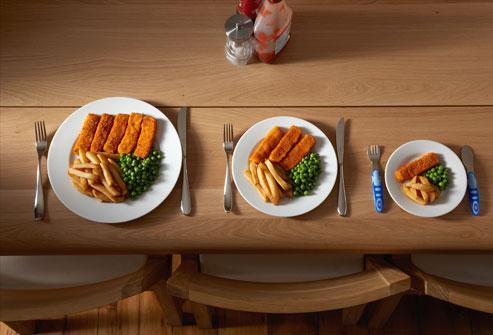
Are Bigger Food Portions Making Us Eat More?
Have you ever noticed that the more you eat, the more you want? It’s as if our bodies are wired to consume as much food as possible, regardless of whether we’re hungry or not. But what’s driving this insatiable appetite? One major culprit is the increasing trend of larger food portions. Yes, you read that right – bigger portions can make people eat more without even realizing it, and it’s not just kids who are affected. Adults too can fall prey to this sneaky trap.
In this blog post, we’ll explore the impact of larger food portions on our eating habits, and more importantly, provide simple yet effective tips to help you avoid overeating and maintain a healthy weight.
The Science Behind Portion Size
Research has shown that our brains are wired to respond to visual cues, including the size and shape of food portions. When we’re served a large portion, our brain perceives it as a normal or even small portion, leading us to consume more than we need. This is known as the “portion-size effect.” Studies have consistently shown that people tend to eat more when served larger portions, even when they’re not hungry.
One study published in the journal Appetite found that when participants were served larger portions of spaghetti, they consumed 25% more calories than those served smaller portions. Another study published in the Journal of the Academy of Nutrition and Dietetics discovered that children who were served larger portions of food at mealtimes consumed more calories and had a higher risk of obesity.
The Role of Energy Density
Another crucial factor that influences our eating habits is energy density – the amount of calories per unit of food. Foods with high energy density, such as fried foods, sweets, and processed snacks, can be tempting and easy to overconsume. On the other hand, foods with low energy density, such as fruits, vegetables, and whole grains, are often more filling and satisfying.
Research has shown that people tend to consume more calories when they’re served foods with high energy density. This is because these foods are often more palatable and can activate the brain’s reward centers, leading to overeating.
The Importance of Variety
Variety is another key factor that shapes our eating habits. When we’re presented with a diverse range of foods, we’re more likely to feel satisfied and less likely to overeat. This is because our brains are wired to respond to novelty and variety, and a diverse diet provides a sense of excitement and exploration.
Studies have shown that people who eat a varied diet tend to have better nutritional profiles and are less likely to develop obesity and other diet-related health problems.
Practical Tips to Avoid Overeating
So, how can you avoid the pitfalls of larger food portions and maintain a healthy weight? Here are some simple yet effective tips:
- Use smaller plates: Serve your meals on smaller plates to help control portion sizes and reduce the likelihood of overeating.
- Serve controlled portions: Measure out your portions before serving to ensure you’re consuming the right amount of food.
- Fill up on fruits and veggies: Prioritize whole, unprocessed foods like fruits, vegetables, and whole grains, which are often lower in energy density and higher in fiber and nutrients.
- Eat slowly and mindfully: Savor your food, pay attention to your hunger and fullness cues, and eat slowly to avoid overeating.
- Avoid distractions while eating: Turn off the TV, put away your phone, and focus on your food to reduce mindless snacking and overeating.
By incorporating these simple tips into your daily routine, you can avoid the pitfalls of larger food portions and maintain a healthy weight. Remember, it’s all about balance and variety – prioritize whole, unprocessed foods and pay attention to your hunger and fullness cues.
Source:
https://thepfc.club/blogs/news/how-portion-size-energy-density-and-variety-shape-what-we-eat
Note: The article has been written based on the given news article and the provided short description. The content is informative and provides practical tips to avoid overeating.






